- Home
- Quizzes
- My Quiz Activity
- Newsletters
- MY FAVORITES
- Add Sports/Teams
- SPORTS
-
NFL
- NFL Home
- Arizona Cardinals
- Atlanta Falcons
- Baltimore Ravens
- Buffalo Bills
- Carolina Panthers
- Chicago Bears
- Cincinnati Bengals
- Cleveland Browns
- Dallas Cowboys
- Denver Broncos
- Detroit Lions
- Green Bay Packers
- Houston Texans
- Indianapolis Colts
- Jacksonville Jaguars
- Kansas City Chiefs
- Las Vegas Raiders
- Los Angeles Chargers
- Los Angeles Rams
- Miami Dolphins
- Minnesota Vikings
- New England Patriots
- New Orleans Saints
- New York Jets
- New York Giants
- Philadelphia Eagles
- Pittsburgh Steelers
- San Francisco 49ers
- Seattle Seahawks
- Tampa Bay Buccaneers
- Tennessee Titans
- Washington Commanders
-
MLB
- MLB Home
- Athletics
- Arizona Diamondbacks
- Atlanta Braves
- Baltimore Orioles
- Boston Red Sox
- Chicago White Sox
- Chicago Cubs
- Cincinnati Reds
- Cleveland Guardians
- Colorado Rockies
- Detroit Tigers
- Houston Astros
- Kansas City Royals
- Los Angeles Angels
- Los Angeles Dodgers
- Miami Marlins
- Milwaukee Brewers
- Minnesota Twins
- New York Yankees
- New York Mets
- Philadelphia Phillies
- Pittsburgh Pirates
- San Diego Padres
- San Francisco Giants
- Seattle Mariners
- St. Louis Cardinals
- Tampa Bay Rays
- Texas Rangers
- Toronto Blue Jays
- Washington Nationals
-
NBA
- NBA Home
- Atlanta Hawks
- Boston Celtics
- Brooklyn Nets
- Charlotte Hornets
- Chicago Bulls
- Cleveland Cavaliers
- Dallas Mavericks
- Denver Nuggets
- Detroit Pistons
- Golden State Warriors
- Houston Rockets
- Indiana Pacers
- Los Angeles Clippers
- Los Angeles Lakers
- Memphis Grizzlies
- Miami Heat
- Milwaukee Bucks
- Minnesota Timberwolves
- New Orleans Pelicans
- New York Knicks
- Oklahoma City Thunder
- Orlando Magic
- Philadelphia 76ers
- Phoenix Suns
- Portland Trail Blazers
- Sacramento Kings
- San Antonio Spurs
- Toronto Raptors
- Utah Jazz
- Washington Wizards
-
NHL
- NHL Home
- Anaheim Ducks
- Boston Bruins
- Buffalo Sabres
- Calgary Flames
- Carolina Hurricanes
- Chicago Blackhawks
- Colorado Avalanche
- Columbus Blue Jackets
- Dallas Stars
- Detroit Red Wings
- Edmonton Oilers
- Florida Panthers
- Los Angeles Kings
- Minnesota Wild
- Montreal Canadiens
- Nashville Predators
- New Jersey Devils
- New York Islanders
- New York Rangers
- Ottawa Senators
- Philadelphia Flyers
- Pittsburgh Penguins
- San Jose Sharks
- Seattle Kraken
- St. Louis Blues
- Tampa Bay Lightning
- Toronto Maple Leafs
- Utah Hockey Club
- Vancouver Canucks
- Vegas Golden Knights
- Washington Capitals
- Winnipeg Jets
- NCAAF
- NCAAM
- Olympics
- Boxing
- Entertainment
- Lifestyle
- Golf
- MMA
- Soccer
- Tennis
- Wrestling
- Sports Betting
- More Sports
- RESOURCES
- My Account
- YB on Facebook
- YB on Twitter
- YB on Flipboard
- Contact Us
- Privacy Policy
- Terms of Service

30 metal albums turning 30 in 2025
What qualified as metal in 1995 was a grab bag for sure. After the fallout from the popularity of grunge, metal went back underground but was poised for a return led by nu metal. While not all of these albums will qualify as "metal" for everyone, they are all loud and heavy.
TAD - Infrared Riding Hood
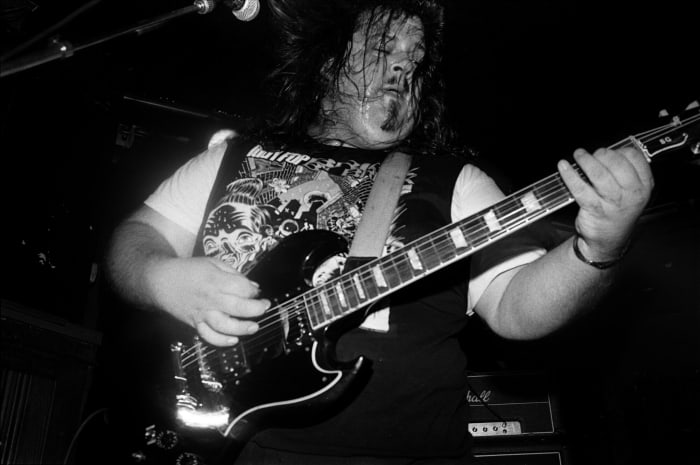
Tad Doyle and company were moved from Giant Records to EastWest (both under the Warner Bros label) for their second and final major label release. Infrared Riding Hood saw the group playing a little more with melody (but still heavy). The group released a final live album, also in 1995, but called it quits not long after.
Anthrax - Stomp 442

Stomp 442 is not a bad album, but how could Anthrax follow up the perfection of Sound of White Noise? Stomp 442 starts a downward slide for the band, as it was their last before being unceremoniously dropped from Elektra and kicked off several years of label changes, personal changes, and all-too-public drama. All the same, the songwriting is tight and the album features some memorable solos from Dimebag Darrell.
Faith No More - King For a Day,...Fool For a Lifetime

Faith No More were always a little too heavy for alt rock, and a little too weird for true metal heads. Coming off of their magnum opus, 1992's Angel Dust, they released King For a Day, Fool For a Lifetime with newly (and briefly) installed guitarist Trey Spruance from Mr.s Bungle. Gone were the layers and layers of soundscapes and what remained was a more stripped down (and largely heavier) sound. While it was seen as a disappointment in the year of its release, time has vindicated the record, with the band playing the album in its entirety in 2011 in a reunion with Spruance. To date, this is the only time Faith No More have played a complete album in a live setting.
Ozzy Osbourne - Ozzmosis

After a failed attempt at retirement, Ozzy returned with Ozzmosis. In addition to rescuing Zakk Wylde from his swamp rock leanings, Ozzy enlisted Geezer Butler (Black Sabbath), Deen Castronovo (Journey), and Rick Wakeman (Yes). While almost no one would call this album "great', it did give Ozzy an excuse to tour, and that's really what it's all about.
GZR - Plastic Planet

Speaking of Geezer Butler, in 1995 he unleashed the debut album from his project GZR (or G//Z/R), entited Plastic Planet. Butler wrote all the music and all the lyrics... but didn't match them up. He left that up to newly enlisted vocalist Burton C. Bell (Fear Factory). The lyrics are occasionally silly (anything is silly under a powerful enough microscope), but the music is very heavy, and Plastic Planet is a hidden gem.
Lita Ford - Black

1995's Black shows former Runaway Lita Ford attempting to move away from hair metal, and starting to explore blues and grunge sounds. She assembled a band to include Larry Dennison (Dio) and Steve Reid (Supertramp), and enlisted the singers from Flogging Molly, Yngwie Malmsteen and Nitro (her then-husband) to sing back up. The album wasn't well received, and it would be 14 years before she released another album.
Grip Inc. - Power of Inner Strength
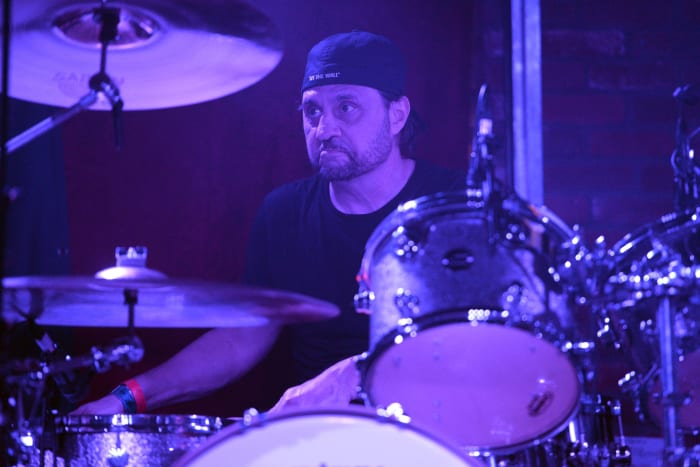
Former Slayer drummer Dave Lombardo formed Grip Inc. in 1993, and enlisted Waldemar Sorychta (Despair, Voodoocult), Jason VieBrooks (Heathen, Die Krupps) and Gus Chambers to fill out the lineup. The band released their debut, Power of Inner Strength, to mixed reception by critics, with some saying that they sounded too much Slayer, and others saying they didn't sound enough like Slayer. Whichever way you lean, there's plenty of crushing drums and riffs to explore.
Skid Row - Subhuman Race

Paradoxically, Skid Row both benefited and were hamstrung by their timing. Exploding onto the scene in the late '80s, they were able to make it big while hair metal was riding high. They went heavier, and punkier, but it was too late for them; they were already guilty by association. It's a shame, because on Subhuman Race they managed to bring in more punk and groove metal influences, even as the band fell apart. Critics were favorable, but the public at large were not.
Flotsam and Jetsam - Drift
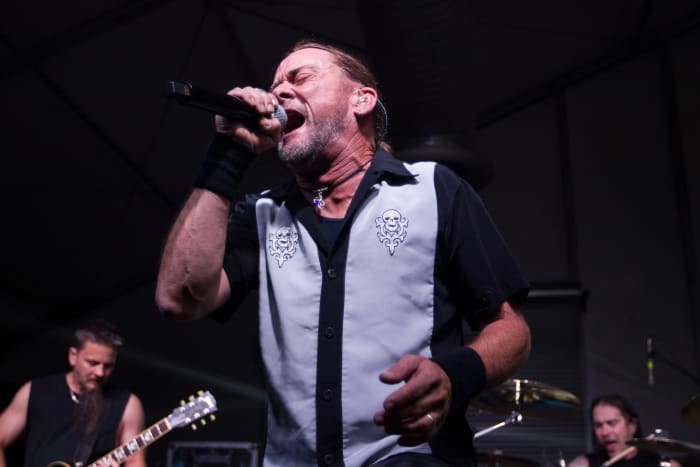
After the career high of Cuatro, Flotsam and Jetsam floundered to sell a follow up. Drift shows the band exploring elements of industrial, alt metal, and groove metal, but pop culture had moved on from metal at large. It's a great album, but lack of sales caused MCA to drop the band. Flotsam and Jetsam have languished in obscurity for decades since, never giving up. It should be noted that they've quietly been releasing great thrash metal albums for the last fifteen years or so. Don't sleep on them.
Fear Factory - Demanufacture

1993's Fear Is the Mindkiller remix EP chose the path for Fear Factory going forward. Suddenly the band was a lot less death metal, and a lot more industrial, with more machine rhythms and songs about the machines taking over. Basically, they became Terminator: The Band. It's not necessarily a bad thing. With Demanufacture, instead of death metal growls, Burton C. Bell alternated his clean singing with hardcore-style shouts.
Iron Maiden - The X Factor
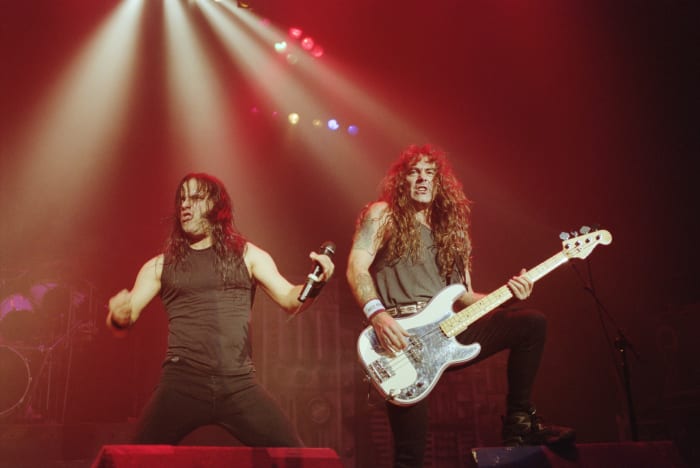
Following Bruce Dickinson's departure to pursue a solo career, Iron Maiden enlisted Blaze Bayley from Wolfsbane to fill Dickinson's shoes. While The X Factor was their tenth consecutive top-10 album in the UK, it fell off the charts inside of four weeks. Reviews were unkind, but the album has undergone a bit of a critical reappraisal in recent years, stating that this album paved the way for what Maiden would be in the future.
Death - Symbolic

Death's Symbolic is universally beloved in the technical death metal genre. With guitarist Bobby Koelble (Azrael), bassist Kelly Conlon (Monstrosity), and drummer Gene Hoglan (Testament, Fear Factory), leader Chuck Schuldiner recorded an album incorporating death metal with melody, and crafting something that was both brutal and accessible. Symbolic set the template for many bands to copy for years to come.
White Zombie - Astro-Creep: 2000

Having just broken through a few years earlier (thanks, Beavis & Butthead), and touring endlessly as a result, White Zombie released their final album Astro-Creep: 2000. A little less groove metal than La Sexorcisto and a little more industrial, the album was a smash hit that paved the way for Rob Zombie's solo career. It's too bad the band can't reconcile, but it's a hell of an album to end on.
Strapping Young Lad - Heavy as a Really Heavy Thing

Devin Townsend recorded Strapping Young Lad's debut in about a week, doing of of the instrumentation himself, with the help of future bandmate Jed Simon. Townsend has been uncomplimentary toward the album, seeming to talk trash about it at every turn. Despite his feelings, one can't deny that the album left its mark. Oh, and the title is pretty funny.
Down - NOLA

What if Black Sabbath were from the American South? You'd find the answer in NOLA, Down's first and best album. A supergroup featuring members of Pantera, Corrosion of Conformity, and Crowbar, the end result is heavy, doom-y, and swampy. In 2001, the band went from occasional distraction to full ongoing real band.
Life of Agony - Ugly

When New York's Life of Agony released their sophomore album, Ugly, fans were befuddled. Gone were the NYC hardcore-style gang shout vocals, replaced with more melodies, acoustic guitars, and synths... but the heavy riffing remained. Ugly was a complex and challenging record that rewarded the band's true fans while brushing off the fair-weather ones.
Gwar - Ragnarok
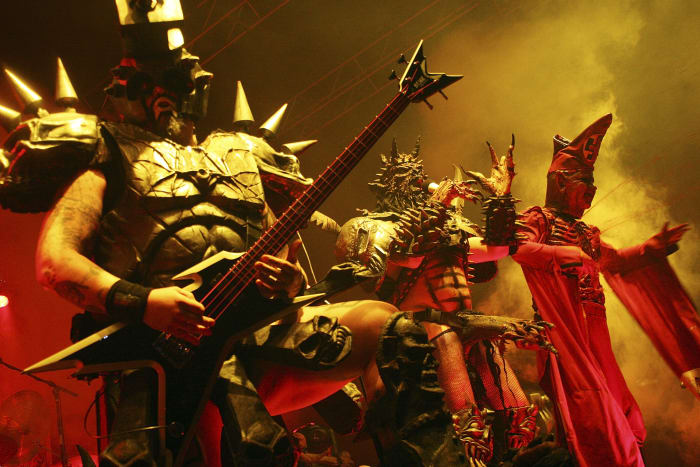
Gwar's 1995 offering, Ragnarok, is often seen as a mediocre effort after the success (and controversy) of their first three albums. That being said, this album shows the band exploring a lot of musical territory not seen before from them. Gwar use a lot of keyboards, surf guitar, and various different vocal stylings from multiple members of the group, which they hadn't done prior. While most of these songs have been forgotten as they aren't played live, there are some interesting bits here to check out.
Deftones - Adrenaline
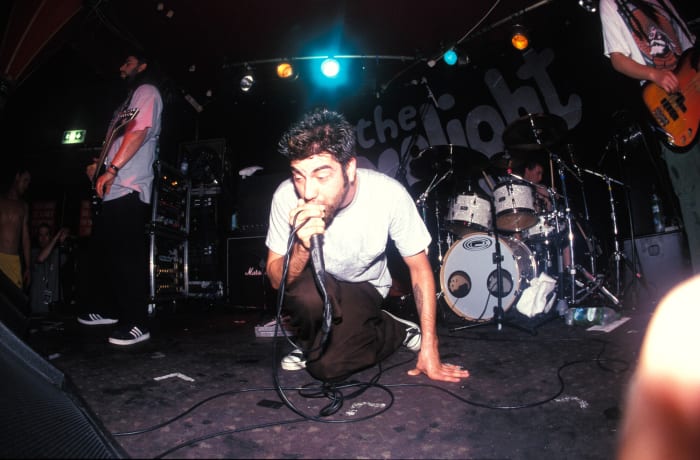
I think that if people could have seen what the Deftones would become, a bigger label than Maverick would have scooped them up for their debut, Adrenaline. Ostensibly a nu metal band following in Korn's footsteps, Adrenaline is the sound of a young band mixing metal, punk, and post-punk and showing the promise of what the band would grow into after getting past their growing pains.
Fight - A Small Deadly Space

Rob Halford's post-Judas Priest group, Fight, released their second (and final) album A Small Deadly Space in April of 1995. Haflord was continuing to explore the groove metal sound popularized by Pantera and the resulting album was well received by fans and critics alike. Fight would split soon after, and Halford would explore industrial and trad metal sounds before ultimately returning to Judas Priest.
Monster Magnet - Dopes To Infinity

On Monster Magnet's third album, Dopes To Infinity, the band were well on their way to perfecting their stoner-meets-space rock sound. "Negasonic Teenage Warhead" was the band's first successful single. Subsequent singles from the album failed to make an impact, so the band would have to wait for their next album to make it big.
Meshuggah - Destroy Erase Improvee

This Swedish extreme metal band's second album is often used as a template for djent, a sub-genre of progressiedwqdvcdv ve metal. Destroy Erase Improve is the first release from the band that is an example of the Meshuggah sound, and is universally regarded as a high water mark for metal as a whole.``
UFO - Walk On Water

After UFO's second reunion, they released their fourteenth album, Walk On Water. Even though the resulting tour flamed out after only four performances (walking off stage in mid-performance), the album was generally well received. Walk On Water illustrates what the band is best known for; driving rhythms and guitar pyrotechnics.
Die Krupps - Rings of Steel

This is a bit of a cheat since it's a remix/compilation album, but for those of us in the United States in the pre-internet era, this was our first exposure to the band. Die Krupps had been flirting with heavy guitars, and even released A Tribute To Metallica, but Rings of Steel gathered all their best material remixed by members of KMFDM, Nine Inch Nails, Faith No More, Carcass, Biohazard and others. 222
Deicide - Once Upon the Cross
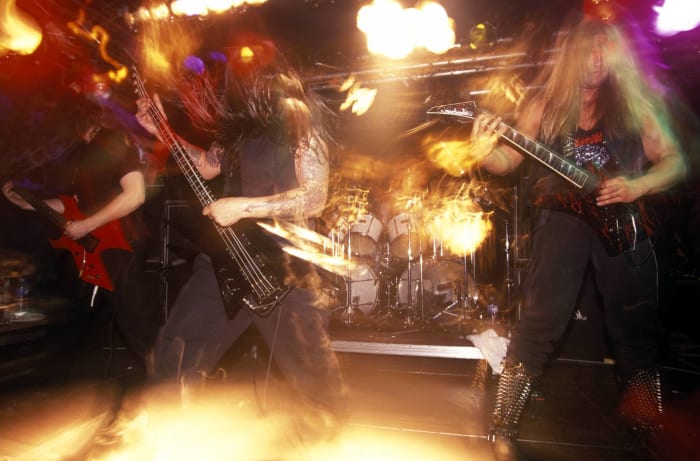
When Deicide isn't busy angering Christians, provoking animal rights activists, inspiring Europeans to bomb their concerts, and burning upside-down crosses into their foreheads, they occasionally make music. While their first two albums are the second- and third-best selling death metal albums in history, respectively, Once Upon the Cross didn't sell quite so well. Even so, the album is a slow., pummeling journey that was largely loved by critics.
Fu Manchu - Daredevil

Orange County's Fu Manchu are the end result of fusing skate-punk with '70s heavy music worship. They may have been "retro", but they were also ahead of the curve. The sound they were cultivating on Daredevil would be in vogue in a few short years when stoner rock became all the rage... or, as much of a "rage" as it could be.
Sugar Ray - Lemonade and Brownies
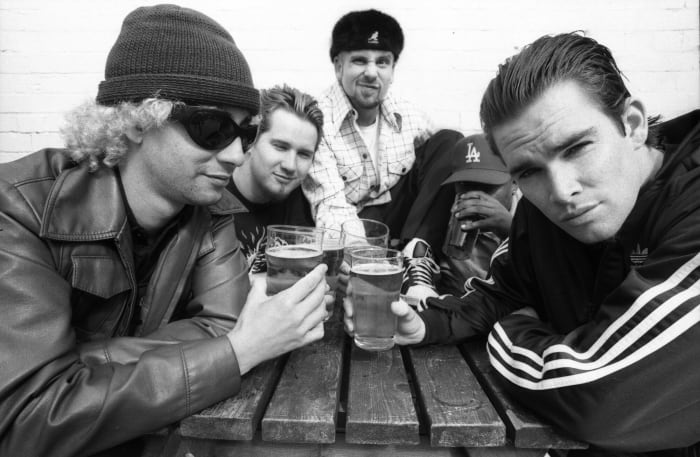
Before the reality TV shows and the plastic surgery, Sugar Ray were a rock band. Starting with hardcore in the pre-record deal years, by the time they signed with Atlantic, they were nu metal. There's a certain charm in the primitiveness of Lemonade and Brownies, certainly more interesting than their pop-music phase, and absolutely more listenable than their current yacht rock incarnation.
Paradise Lost - Draconian Times

British gothic metal band Paradise Lost released their landmark album, Draconian Times, to wide acclaim. With their Metallica-meets-Sisters of Mercy approach, the record was an oppressive mix of goth and metal that was the perfect distillation of their morbid lyrics. While the album didn't do much in the United States, it charted in nine European countries, often in the top 20.
Cathedral - The Carnival Bizarre

Cathedral's third album was their tightest and most focused to date when it was released in 1995. After attempting to make the leap to major label Columbia, the band returned to Earache with The Carnival Bizarre. They experimented with faster rhythms and '70s rock idolatry instead of just staying in their doom metal lane, and a boost with some guitar from Tony Iommi didn't hurt, either.
Morbid Angel - Domination

With their fourth album, Morbid Angel's Domination would be their last for Warner Bros. imprint Giant Records. The album is controversial among fans as it is slower, more melodic, and more atmospheric (with keyboards!) than prior albums. Even so, critics were favorable on the release.
Iced Earth - Burnt Offerings

Burnt Offerings is often considered Iced Earth's heaviest and darkest album. Fueled by frustrations with the music industry and complemented with lyrics about Dante's Inferno and Bram Stoker's Dracula, the album is a fan favorite.
After obtaining his Master's Degree, Zach Richardson retreated deep within Appalachia where he lives with his family and his dogs. He has written a number of record reviews and deep dives on artists. When he's not searching the wilds for Mothman, he's procrastinating on writing a Black Sabbath piece that's been in the works for seven years
More must-reads:
- 22 underrated lead singers who deserve way more love
- Old souls: Singers who are 70+ and still got it
- 20 bands we'd like to see reunite
- Which 25 rock albums have sold the most copies all-time?
- The greatest songs that run 10 minutes or more
Customize Your Newsletter
 +
+
Get the latest news and rumors, customized to your favorite sports and teams. Emailed daily. Always free!
PRIVACY POLICY EDITORIAL POLICY CONTACT US
ABOUT YARDBARKER TERMS OF SERVICE
Use of this website (including any and all parts and
components) constitutes your acceptance of these
Terms of Service and Privacy Policy.
This site is for entertainment purposes only.
There is no gambling offered on this site.
Gambling Problem? Call 1-800-Gambler.








